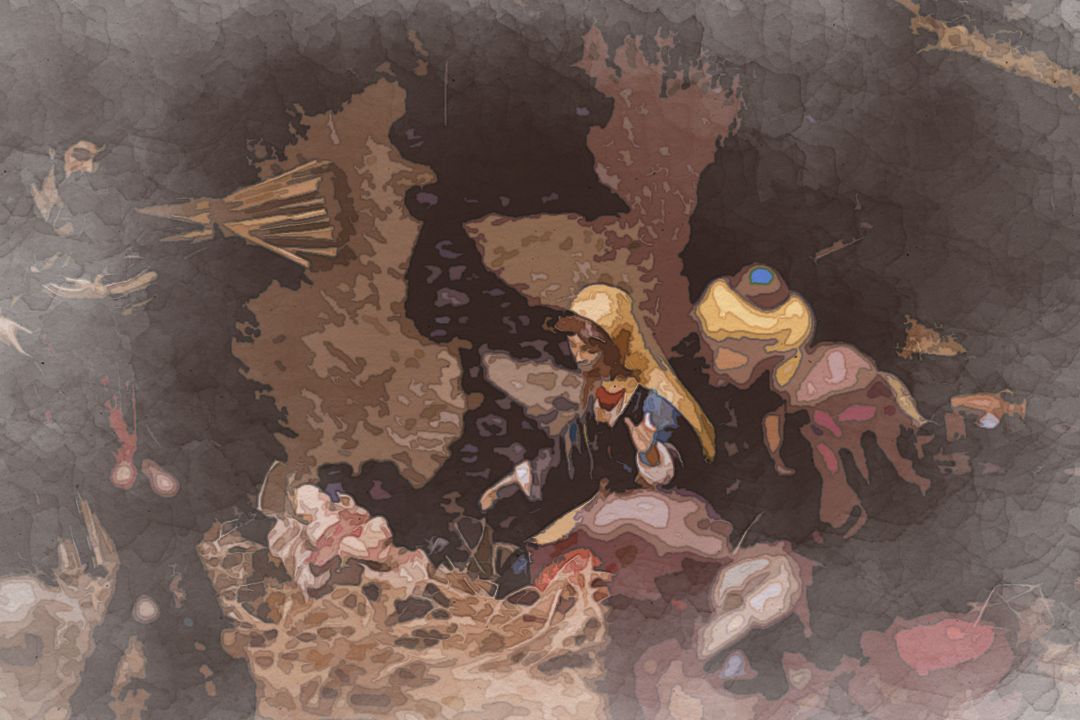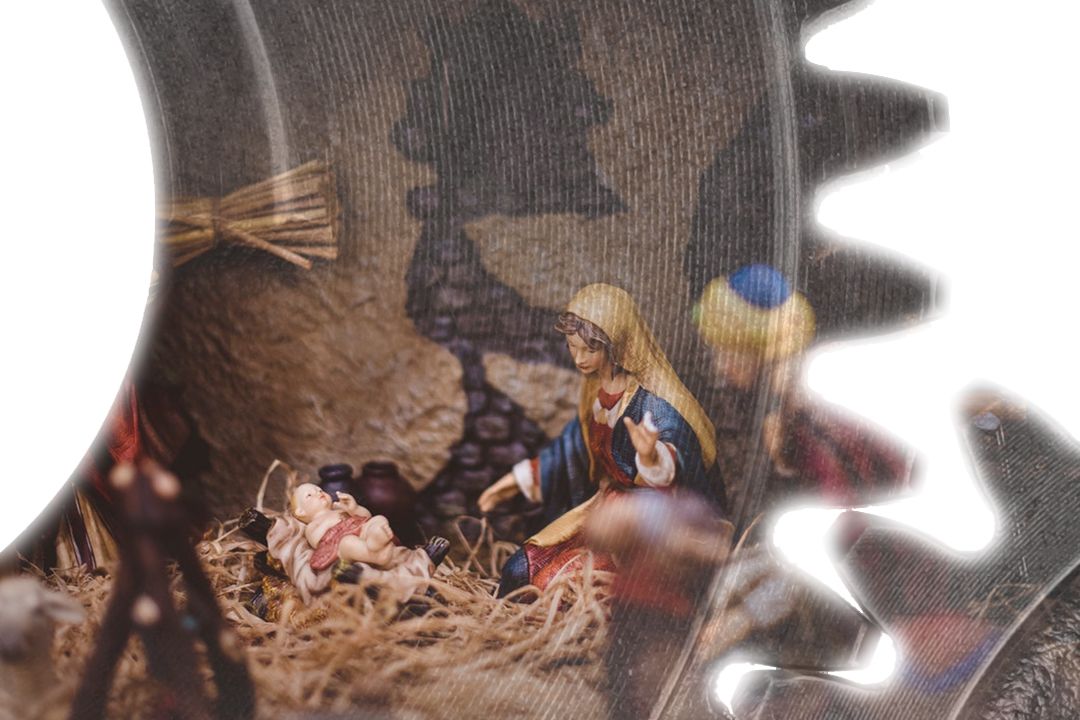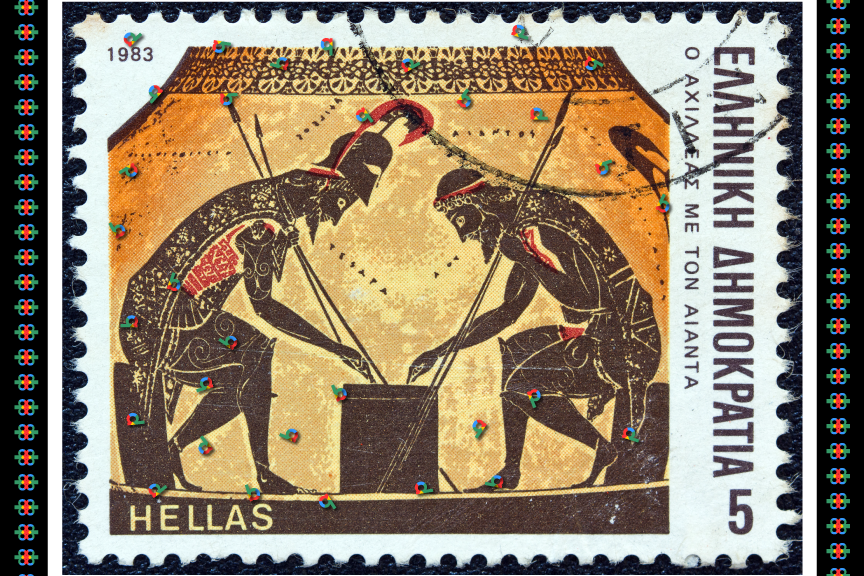The Cogs of Nativity

Don’t Make a (Nativity) Scene
In the quaint village of St. Agnes, nestled amidst rolling hills and whispering pines, there lived an artist named Gabriel. His studio, tucked away in a rustic cottage at the edge of town, was a sanctuary of creativity. Here, amidst the scent of turpentine and the soft hum of classical music, Gabriel poured his soul onto canvas.
One crisp autumn morning, as golden leaves danced in the breeze, Gabriel found himself pondering his next masterpiece. The approaching holiday season ignited a spark of inspiration within him, and he decided to undertake a project unlike any other—a Nativity scene that would capture the essence of the Christmas spirit.
As he sketched out his vision, Gabriel reflected on the words of Michelangelo: “A man paints with his brains and not with his hands.” These words resonated deeply with him, reminding him that true artistry stemmed not just from technical skill, but from imagination and intellect.
Weeks turned into months as Gabriel painstakingly brought his vision to life. With each stroke of his brush, he poured his heart and mind into the canvas, infusing every figure with emotion and depth. Mary’s serene gaze, Joseph’s protective stance, and the tender innocence of the newborn Christ—all were meticulously crafted to evoke a sense of wonder and reverence.
Despite his dedication, Gabriel couldn’t shake the doubt lingering in the back of his mind. Would his interpretation of the Nativity scene resonate with others, or would it be dismissed as sacrilege? The weight of expectations hung heavy upon him, threatening to stifle his creativity.
As the winter solstice approached and the villagers prepared for their annual Christmas festivities, Gabriel’s Nativity scene remained shrouded in secrecy within his studio. Rumors began to circulate throughout the village—whispers of an unconventional interpretation that challenged tradition.
The night before Christmas Eve, as Gabriel made final adjustments to his masterpiece, he found himself grappling with uncertainty. In that moment of doubt, he again turned to Michelangelo’s words for solace and reassurance.
A man paints with his brains and not with his hands.
— Michelangelo (1475-1564)
... he whispered to himself, finding strength in the reminder that true artistry transcended mere technique. With renewed determination, Gabriel made the decision to unveil his Nativity scene to the villagers, trusting in the power of his intellect and creativity to convey his message.
On Christmas Eve, as the villagers gathered in the town square beneath a canopy of twinkling stars, Gabriel unveiled his masterpiece for all to see. Gasps of astonishment filled the crisp night air as the intricately detailed scene came into view. Mary and Joseph, bathed in ethereal light, gazed down upon the newborn Christ with expressions of profound love and adoration.
As the villagers beheld Gabriel’s interpretation of the Nativity, they felt a stirring within their hearts—a recognition of the timeless story brought to life in a way they had never imagined. In that moment, they understood the true meaning of Christmas: not just as a celebration of tradition, but as a testament to the power of creativity and imagination to touch the soul.
In the weeks that followed, Gabriel’s Nativity scene became a beloved symbol of the village, cherished for its depth and beauty. And as the years passed, his masterpiece continued to inspire all who beheld it, reminding them of the profound truth encapsulated in Michelangelo’s timeless words: “A man paints with his brains and not with his hands.”

Figures of Speech Collection Personified
Our editorial instructions for your contest submission are simple: incorporate the quotes and imagery from the above article into your submission.
What emerges is entirely up to you!
Winners receive $500 per winning entry multiplied by the article’s featured quotes. Our largest prize is $8,000 for rewriting the following article;

At Planksip, we believe in changing the way people engage—at least, that’s the Idea (ἰδέα). By becoming a member of our thought-provoking community, you’ll have the chance to win incredible prizes and access our extensive network of media outlets, which will amplify your voice as a thought leader. Your membership truly matters!


